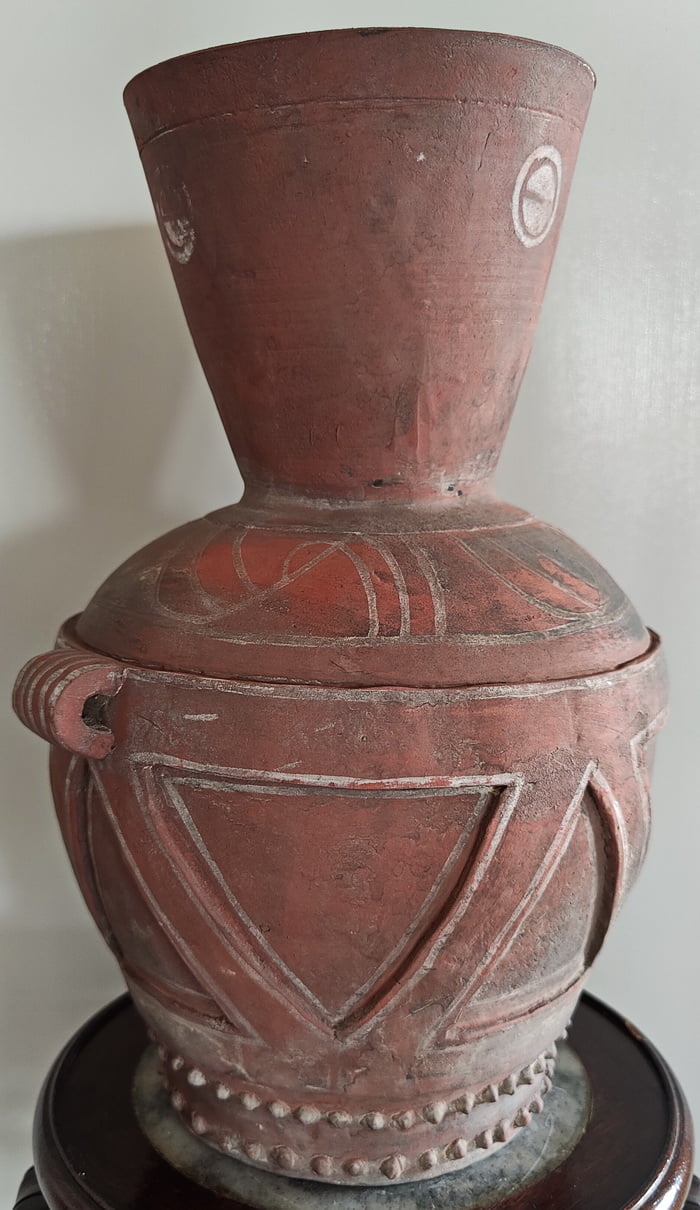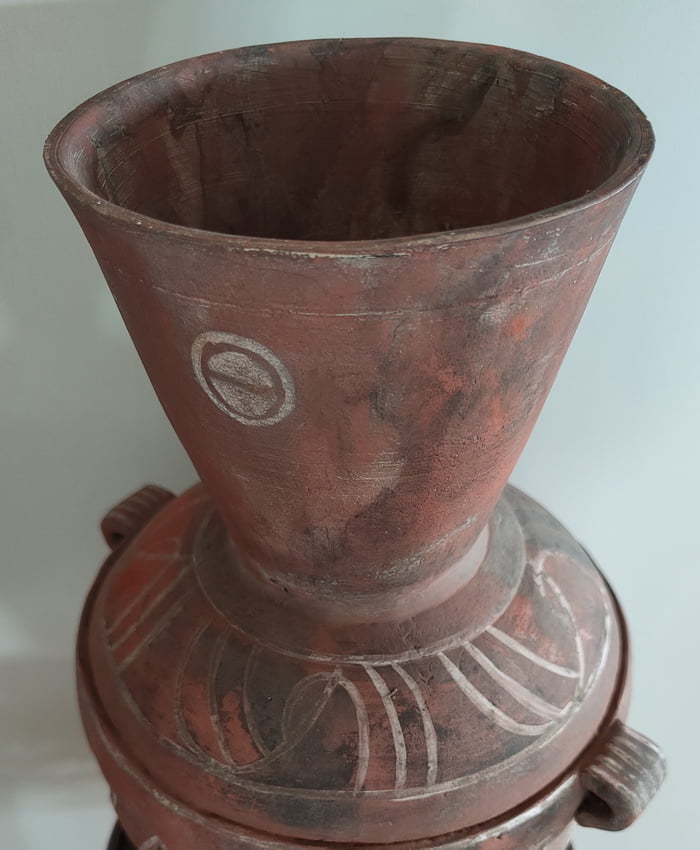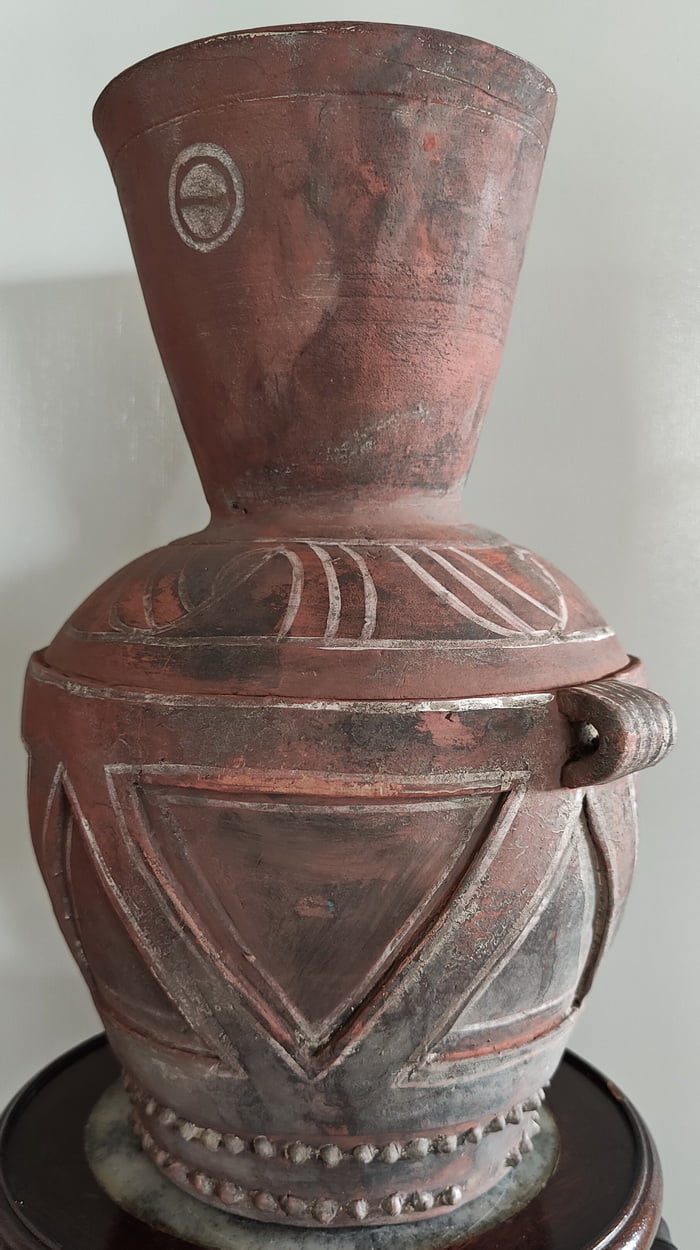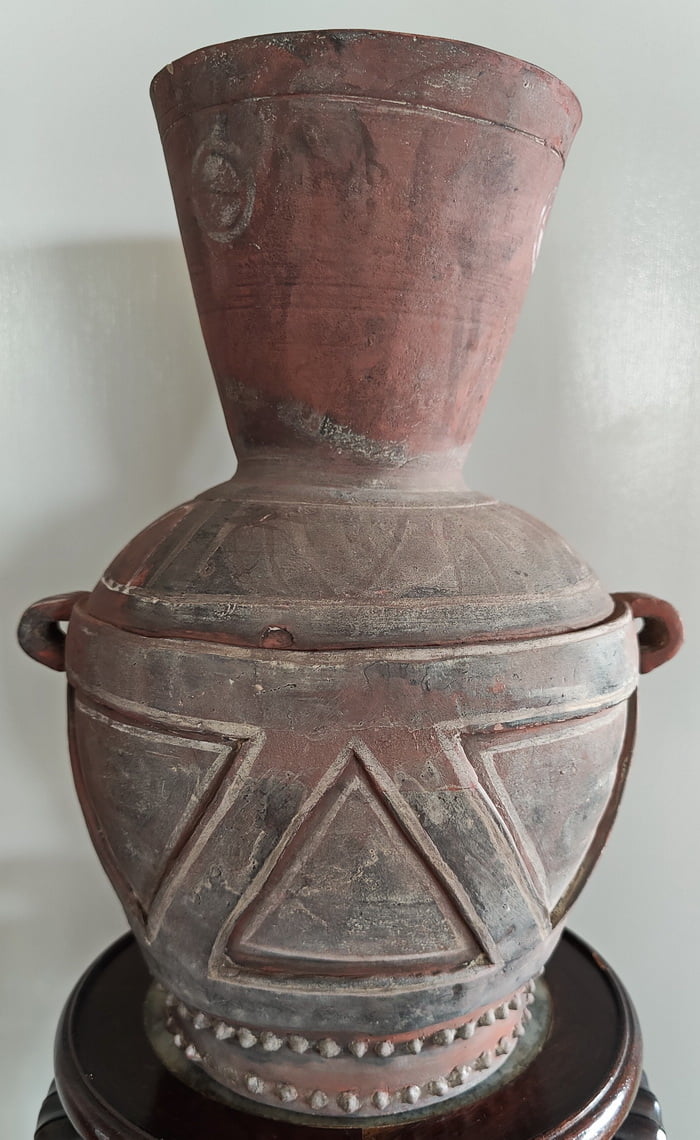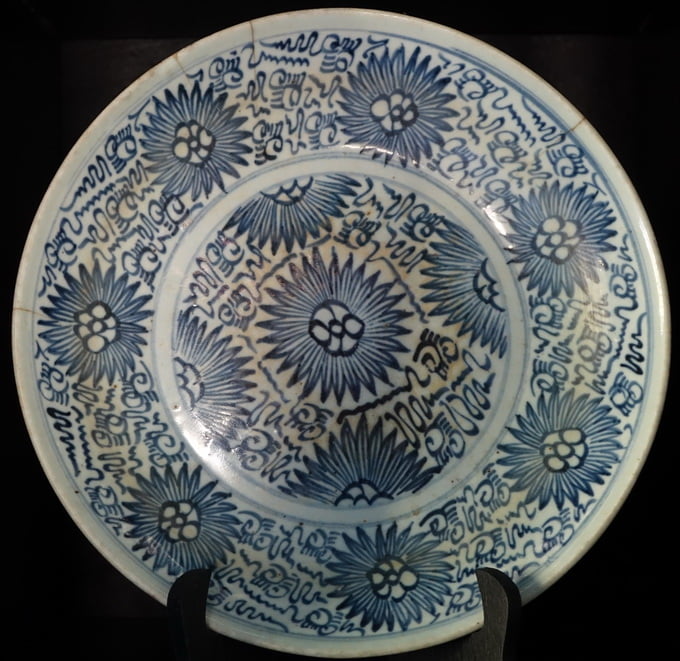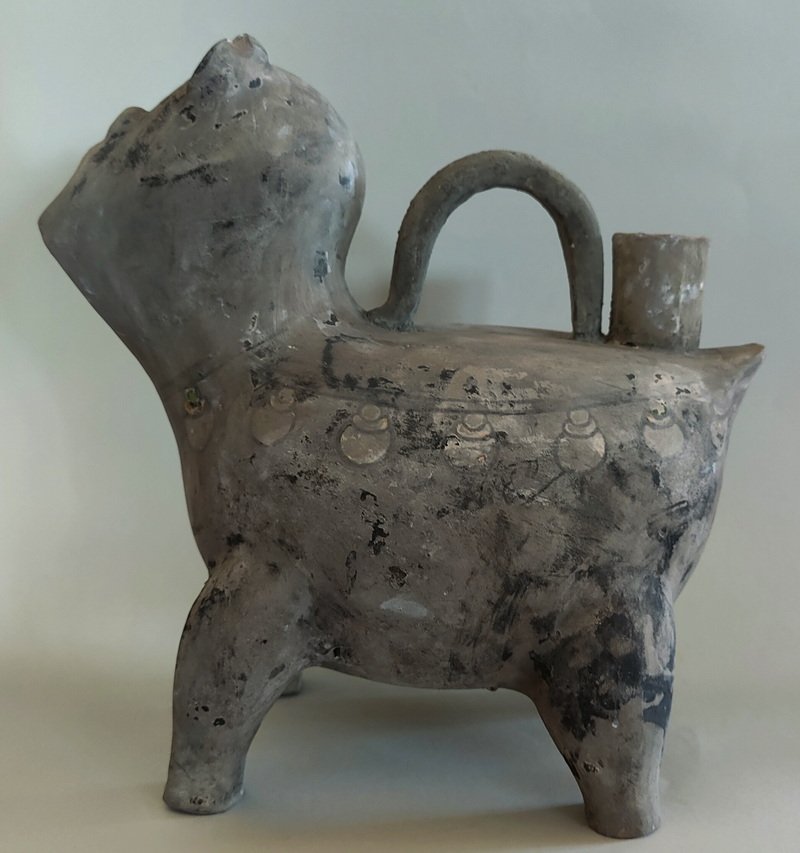Chinese Dawenkou Culture Terracotta Vessel
Chinese Dawenkou Culture Terracotta Vessel
AGE: – Early Dawenkou culture 4300 – 3500 B.C.
CONSTRUCTION: – Earthenware/Terracotta
HEIGHT: – 35.5cm
Circumference:– 69cm
Base Diameter: – 13cm
WEIGHT:– 2.95 kg.
#423 – PRICE: CONTACT
Chinese Dawenkou Culture Terracotta Vessel dating from 4300 – 3500 BC. – Research into the patterns and artwork painted onto these neolithic vessels suggests that the triangles carved into this vessel may have evolved from the shape of the tail fin seen on fish and that the circular forms are inspired by the eyes.
The Dawenkou Culture was discovered by archaeologists in the early 1970s in Shandong, China. The Dawenkou Culture is known for its elaborate burial rituals and offerings. A vessel such as this could possibly have been of utilitarian use or placed in a burial chamber with other utilitarian-type earthenware such as this vessel in the shape of a pig.
Read More
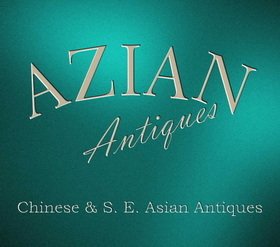
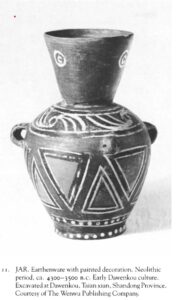 According to the literature regarding a similar type of vessel, it is suggested that it was possibly made on a wheel which differed from earlier handmade pottery during the Neolithic period.
According to the literature regarding a similar type of vessel, it is suggested that it was possibly made on a wheel which differed from earlier handmade pottery during the Neolithic period.